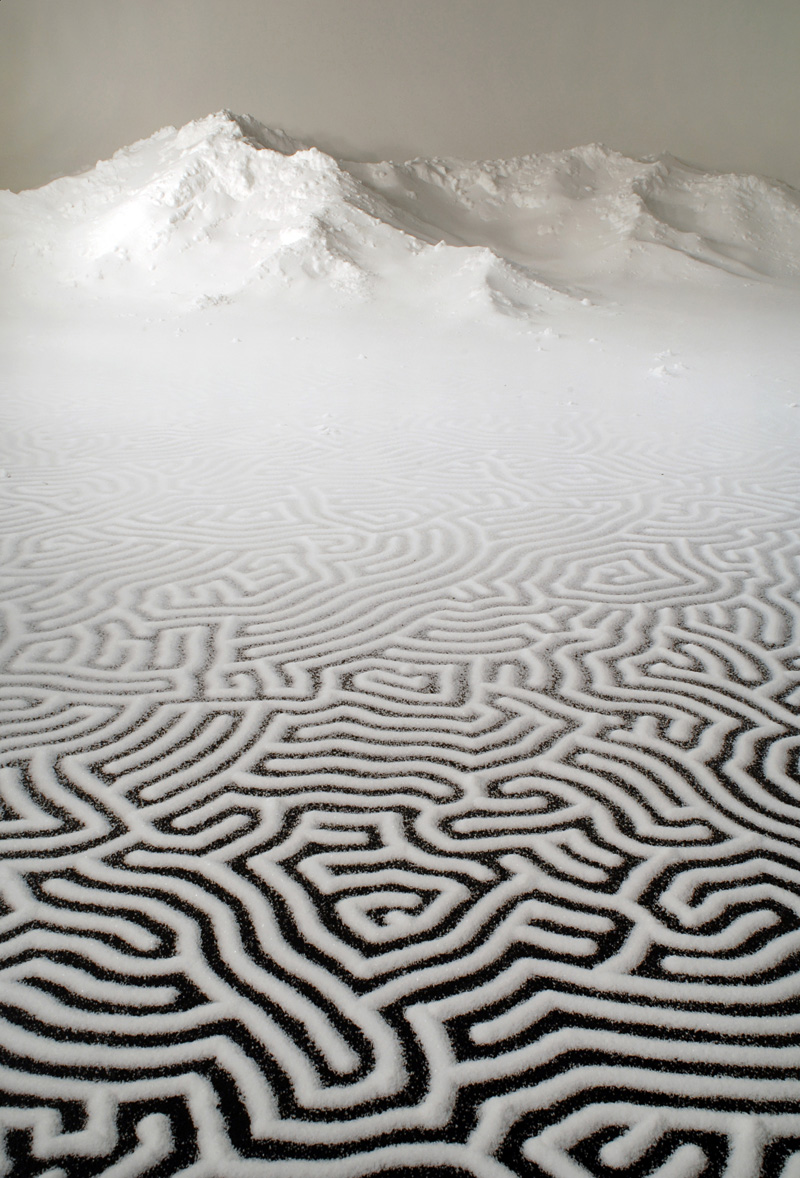When a group show promises to “explore the healing power of art,” I visit with clenched fists. Hey, you oil painters and interpretive dancers, come sit with me at the bedside of my slowly succumbing mother during chemotherapy. Why don’t you make some art about it? That would be really helpful. I’m sure it would make a big difference. Art, like a funeral, is for the living. It’s a way to talk about the dying and afflicted—for our benefit, not theirs. In and of itself, it heals nothing. You could push 100 terminal cases in their wheelchairs through Making Mends, and none would be saved. It’s magical thinking, like the faith healing in a church. Still, despite the exhibit’s flawed premise, the art ain’t all bad. (Fifteen artists are represented.) And I particularly wish I’d stopped by BAM at the beginning of the month, when Motoi Yamamoto spent four days painstakingly pouring salt onto the floor—using a few 50-pound sacks, by the look of it—to create his intricate, delicate Labyrinth, which snakes like a glacier up to a miniature mountain range. In Japan, of course, salt is ritually flung at funerals as a gesture of purification. Also, the snow of this mountainous diorama suggests a pure, untrampled state—like some imaginary Everest that will never be climbed. And when the show ends, everything will be swept away, like the scattered ashes of the dead.
Artist, Heal Thyself!
An installation evokes salt as a purifier.








